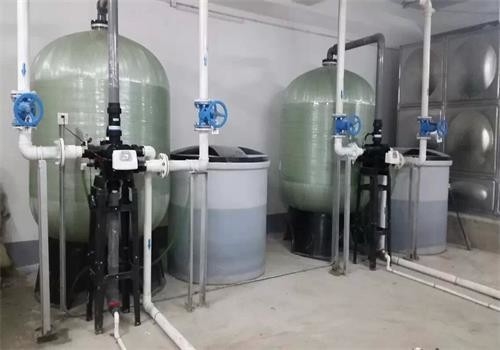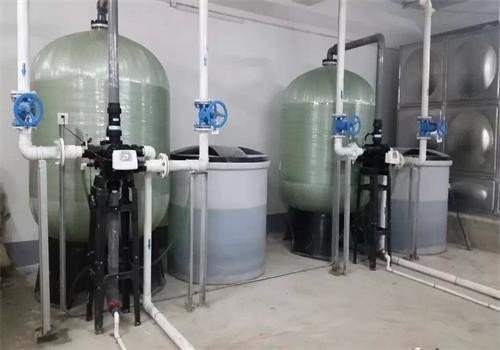-
Condensate Water Recovery Device
-
Reverse Osmosis Equipment
-
Fully Automatic Water Softener
-
Industrial Sand Filter
-
Water Supply Equipment
-
Chemical Dosing Device
-
Container Flipper
-
Container Loading and Unloading Machine
-
Truck Flipper
-
Electric Transfer Cart
-
Electronic Weighbridge
-
Mobile Loading Dock Ramp
-
Air Compressor Heat Recovery
-
Water Treatment Accessories
Efficiency Single Tank Fully Automatic Water Softener With Stainless Steel Components

Contact me for free samples and coupons.
Whatsapp:0086 18588475571
Wechat: 0086 18588475571
Skype: sales10@aixton.com
If you have any concern, we provide 24-hour online help.
x| Features | High Automation Level, Stable Water Quality, High Efficiency, Low Energy Consumption, Low Operating Costs. | Product Specifications | 1-100T/H |
|---|---|---|---|
| Origin | Taian, Shandong | Product Information | Automatic Water Softening Equipment - Dual-Tank, Single-Tank, Continuous Water Production |
| Brand | Tonglida | Application Fields | Industrial Boilers, Central Air Conditioning Systems, Heat Exchangers, Hotels, Restaurants, Food And Chemical Industries, Laundry And Dyeing, Medical And Sanitation, Etc. |
| Materials | Fiberglass Reinforced Plastic (FRP), Stainless Steel, Carbon Steel | ||
| Highlight | single tank fully automatic water softener,automatic softening water treatment equipment,single tank softening water treatment equipment |
||
Product Description:
The fully automatic water softener comes equipped with a comprehensive automatic control system, and can be customized as either a single or dual tank system to suit user requirements. The system operates automatically, with one tank serving as the primary unit while the other acts as a backup. As soon as the primary tank reaches its set water production capacity, it automatically enters into a regeneration mode, and the backup tank takes over the operation. The entire softening system operates seamlessly in a fully automatic mode, and the operation of the softening tank includes various process stages such as: running, backwashing, brine suction, ion exchange, forward flushing, and standby.
Raw water flows through the resin tank which contains ion exchange resin and is equipped with an automatic control valve. The exchangeable ions Na+ in the resin undergo a process of ion exchange with the cations (Ca2+, Mg2+) present in the water, resulting in the water hardness of the softener outlet being ≤0.03mmol/L. The controller automatically initiates the regeneration process when the system reaches the set flow rate. The main steps involved in the regeneration process are as follows:
- Backwashing: The water is directed upward through the bottom distributor to flush and loosen the resin bed, while simultaneously removing accumulated suspended particles from the resin surface.
- Brine Suction Regeneration: A saturated brine solution is injected into the resin tank through a brine injector after being diluted to a concentration of 5-8%. The brine solution flows downward through the deactivated resin bed, regenerating the resin and restoring its original exchange capacity.
- Exchange: The exchange process consists of two stages. In the first stage, after the regeneration liquid is injected, there is still some regeneration brine in the upper space of the resin tank that has not participated in the regeneration process. To fully utilize this brine, clean water with the same flow rate as the regeneration liquid is used to thoroughly regenerate the uninvolved brine through the resin bed, which is referred to as the exchange stage. In the second stage, the regeneration waste liquid in the resin pores is displaced from the resin bed.
- Forward Flushing: The purpose of the forward flushing process is to completely remove the residual regeneration waste liquid from the resin bed and clean it until the water meets the required standards.
| Project Name | Unit | 1T/H | 2T/H | 4T/H | 6T/H | 8T/H | 10T/H | 12T/H | 80T/H | 100T/H | |
| Inlet pressure | mpa | 0.15-0.25 | 0.2-0.3 | ||||||||
| Water production | T/H | 0.8-1.2 | 1.8-2.2 | 3.8-4.2 | 5.7-6.2 | 7-9 | 9-11 | 11-13 | 70-90 | 90-110 | |
| Raw water turbidity | O | ≤2 | |||||||||
| Raw water hardness | mmol/L | ≤15 | |||||||||
| Residual hardness of soft water | mmol/L | ≤0.03 | |||||||||
| Self-consumption water rate | % | 4 | |||||||||
| Power supply | Single-phase electricity 50HZ 220V | ||||||||||
| Diameter of exchange column | Stainless steel head | mm | ∅1200 | ∅1400 | |||||||
| Ordinary head | mm | ∅160 | ∅200 | ∅300 | ∅360 | ∅420 | ∅420 | ∅520 | ∅1180 | ∅1400 | |
| Resin tank height | mm | 1500 | 1800 | ||||||||
| Inlet and outlet water pipeline | Solenoid valve | mm | DN15 | DN20 | DN40 | DN50 | DN125 | DN150 | |||
| Valve body | mm | DN20 | DN25 | ||||||||
| Flow meter | L/H | 60 | 100 | 100 | 160 | 160 | 160 | 400 | 2000 | 2500 | |
| Resin filling capacity | Solenoid valve | KG | |||||||||
| Total weight of equipment | KG | ||||||||||
| Salt tank size | Self-processing | mm | 225*650 | 225*650 | 315*650 | 315*650 | 410*650 | 410*650 | 460*730 | 890*800 | |
| Purchase from outside | |||||||||||
Features:
Benefits of Our System
Our system offers a multitude of benefits for your facility. One of the most significant advantages is our high level of automation. With our automated processes, you can increase productivity and reduce errors in your water treatment operations.
Furthermore, our system provides stable water quality through our advanced filtration and treatment methods. Achieving and maintaining water quality standards is crucial, and our system’s reliability ensures that your facility consistently meets regulatory requirements.
In addition to its effectiveness, our system is also highly efficient. It can process large amounts of water while minimizing waste and maximizing output. This efficiency translates into lower energy consumption, reducing your facility’s energy costs and contributing to a more sustainable future.
Last but not least, our system has low operating costs. The high efficiency levels mentioned earlier and our minimal maintenance requirements ensure that your expenses are minimized over time.
- High automation level
- Stable water quality
- High efficiency
- Low energy consumption
- Low operating costs
Our system is designed to optimize your water treatment operations, from reliable and stable water quality to lowered costs and more sustainable practices. Make the investment in our system today, and experience these benefits for yourself.
Technical Parameters:
Our automatic control system provides a simple yet reliable way to operate our water softening equipment. You can trust that the system will work effectively without any complicated or confusing steps.
Our water softening equipment has strong adaptability and can effectively soften water with high hardness up to ≤15mmol/L. With a single pass, the residual hardness can be reduced to ≤0.03mmol/L. This allows our customers to enjoy better quality water without any extra effort or expense.
Our equipment also has a short regeneration time, low resin consumption, and low salt consumption. The water quality remains stable and operating costs are kept low for our customers.
Our equipment has a lightweight design with a compact and rational structure. It requires a small footprint and can fit into tight spaces without sacrificing efficiency and effectiveness.
The complete water softening machine is delivered from the factory, and installation is simple. Only the inlet and outlet pipes and power supply need to be connected to start water production. Our customers can enjoy high-quality water without undergoing a complicated installation process.
Applications:
The automatic water softener is a versatile device that is commonly used to treat the circulating makeup water in a wide range of equipment and systems. This includes but is not limited to steam boilers, hot water boilers, heat exchangers, steam condensers, air conditioning systems and direct-fired equipment and systems.
In addition to its use in these industrial processes, the automatic water softener is also widely used for domestic water treatment. It is also used to treat industrial water in a variety of sectors, including food, electroplating, pharmaceuticals, chemicals, printing and dyeing, textiles, and electronics.
The water hardness of a given system can be significantly reduced by the use of single-stage or multi-stage water softeners. This helps to ensure that the water produced by the system is safe and meets the required quality standards. In fact, water softeners are often used as pre-treatment for desalination systems, further highlighting their importance in ensuring the availability of clean water for various industrial and domestic applications.




